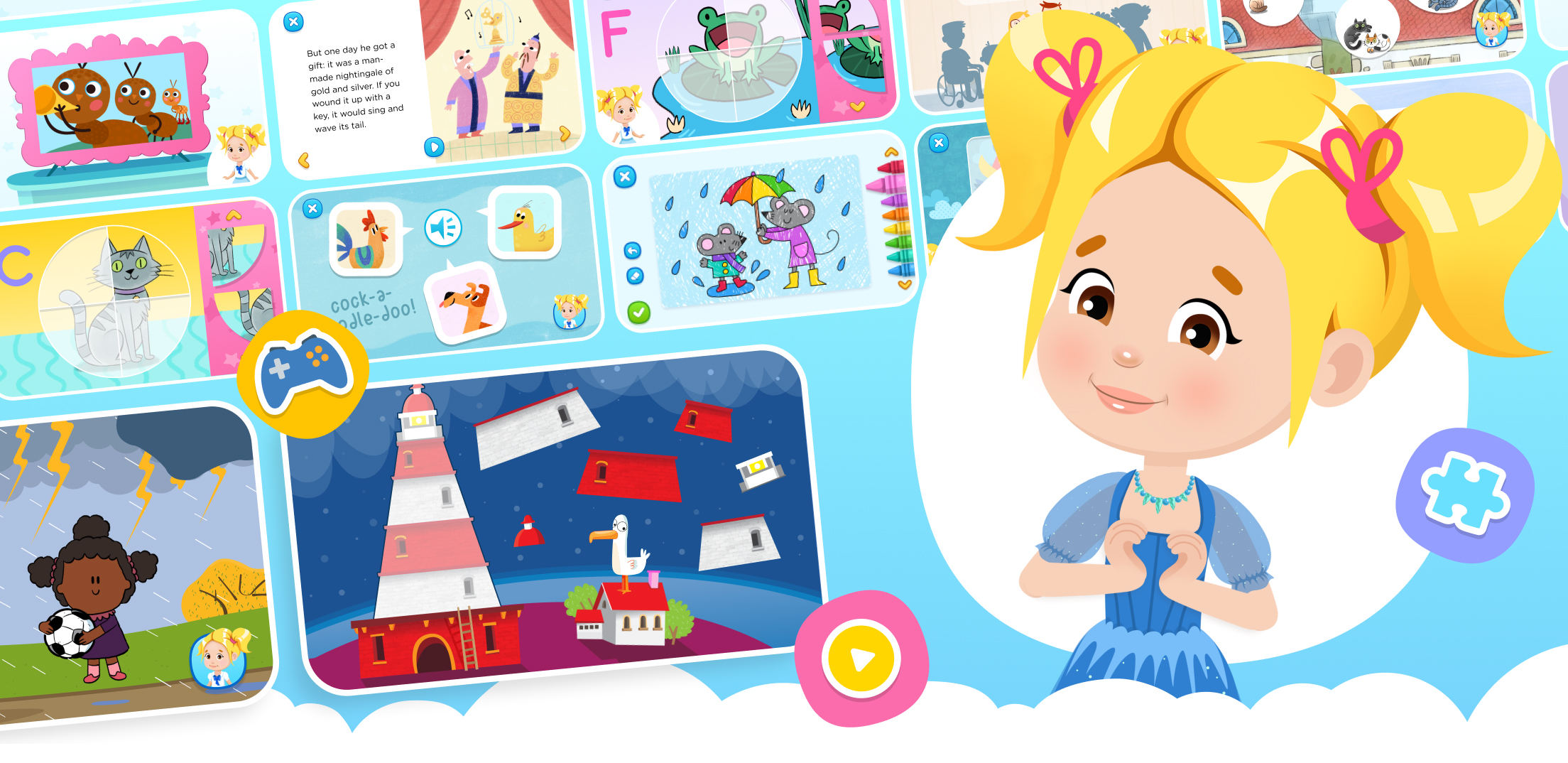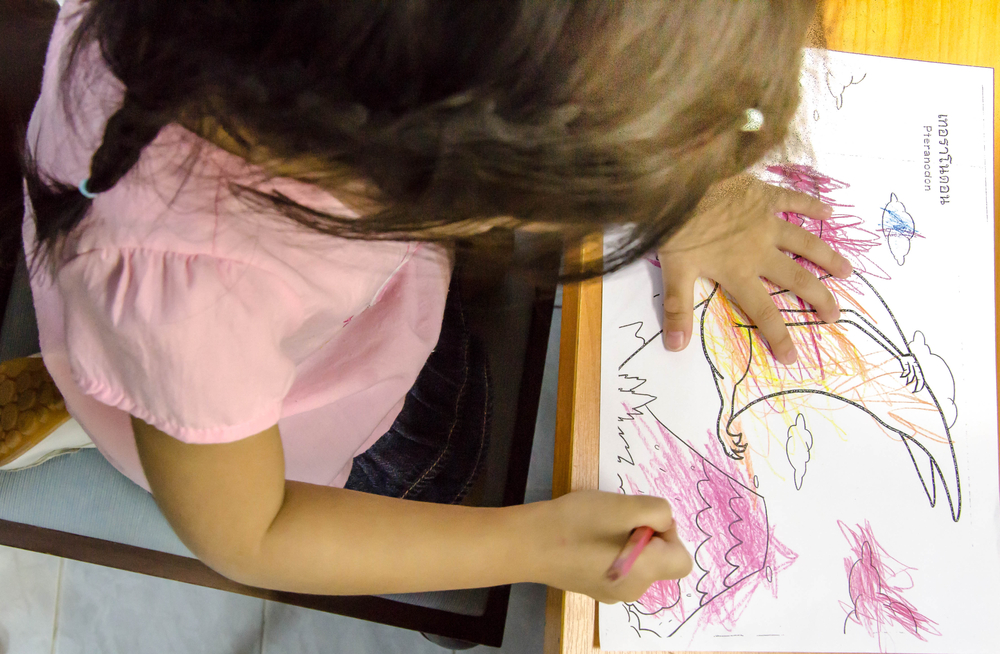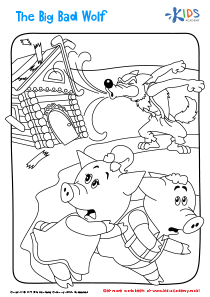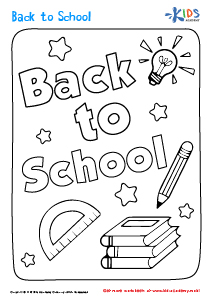Color recognition Vocabulary Coloring Pages Worksheets for Ages 3-7
8 filtered results
-
From - To
Discover our engaging "Color Recognition Vocabulary Coloring Pages Worksheets" designed for children ages 3-7! These fun, interactive worksheets help young learners enhance their color recognition skills while expanding their vocabulary. Each page features vibrant, relatable images that encourage creativity and make learning enjoyable. Kids can color, trace, and identify colors, reinforcing their understanding as they play. Our resources are perfect for home or classroom use, fostering early education in an entertaining way. Watch your child flourish in their learning journey with these captivating coloring pages that combine fun and education seamlessly. Start exploring today and let the colorful adventure begin!


Red and Blue Coloring Fun Worksheet


Yellow and Green Coloring Fun Worksheet
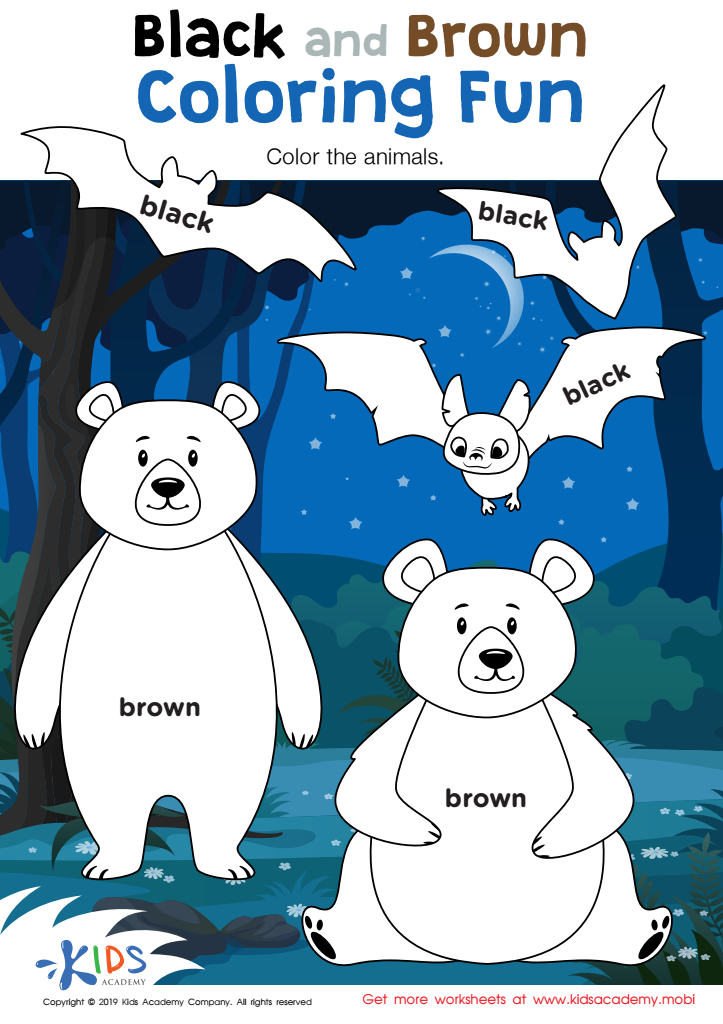

Black and Brown Coloring Fun Worksheet


Purple and Orange Coloring Fun Worksheet
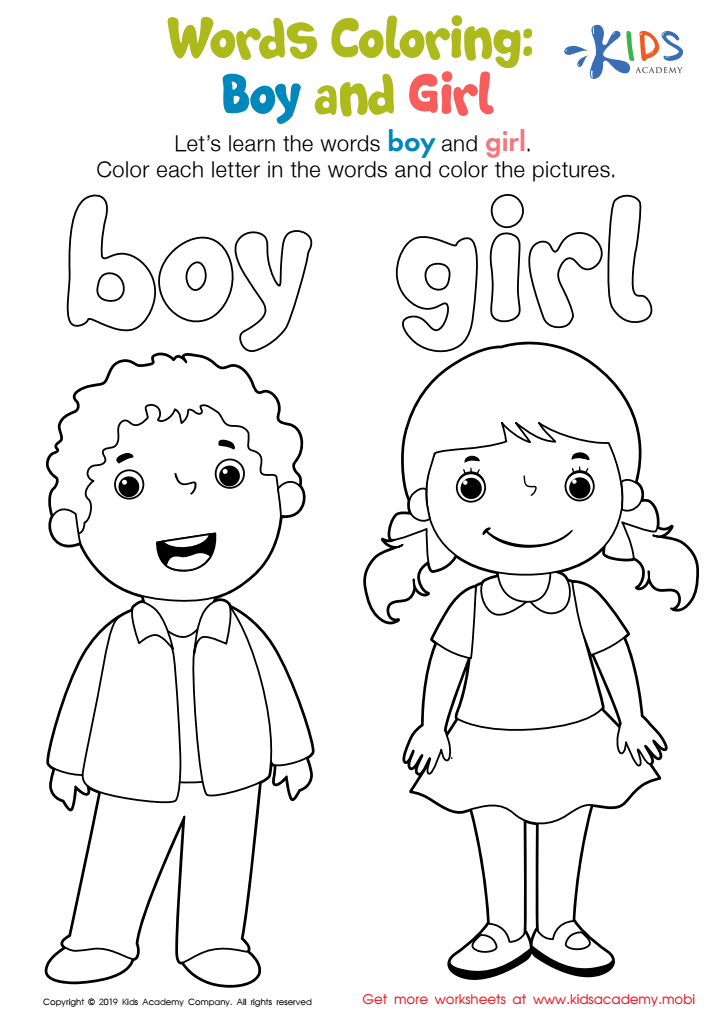

Boy and Girl Words Coloring Worksheet


Tired and Worried Words Coloring Worksheet
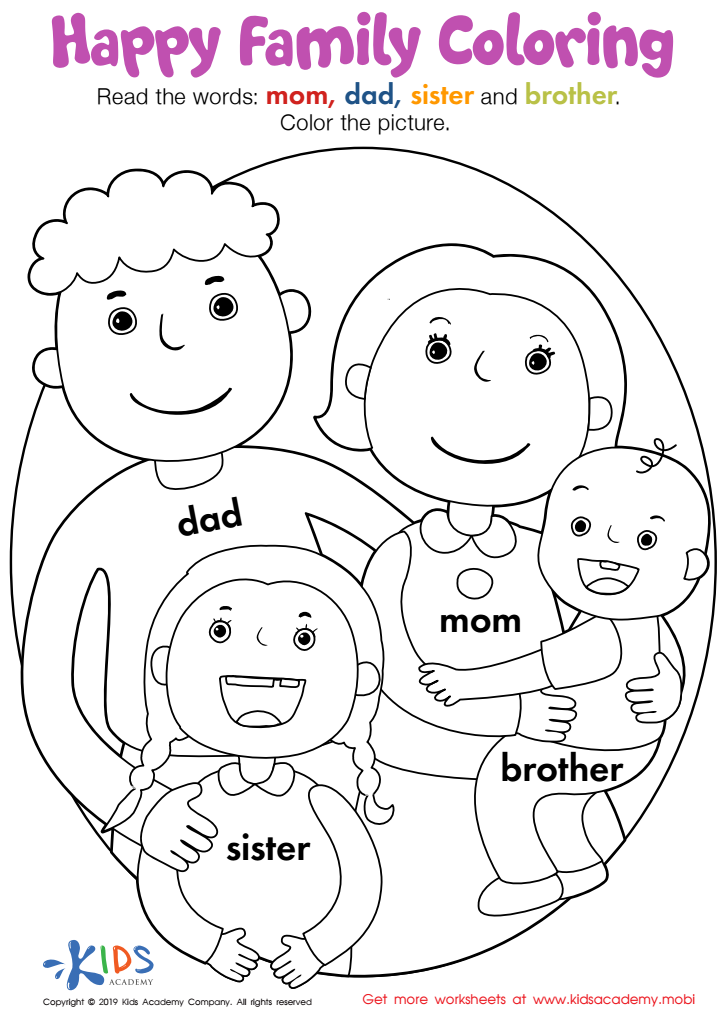

Happy Family Coloring Worksheet


White and Pink Coloring Fun Worksheet
Color recognition and vocabulary are foundational skills for young children, significantly influencing their cognitive development and early literacy. For parents and teachers of children aged 3 to 7, utilizing coloring pages focused on color recognition is a valuable strategy that promotes learning in an engaging way.
First, these coloring pages help children identify and name various colors, enhancing their vocabulary. By associating colors with everyday objects, children deepen their understanding and improve their communication skills. This learning method appeals to their natural curiosity and creativity, making it more likely that they will remember the colors they encounter.
Moreover, the act of coloring itself helps develop fine motor skills, crucial for later tasks such as writing. As children manipulate crayons or markers, they also improve their hand-eye coordination and dexterity.
Finally, these activities can foster positive family or classroom interactions. When parents or teachers sit down with children to color, they create opportunities for bonding and guided discussions about colors, shapes, and objects, reinforcing learning in a fun environment.
In summary, color recognition vocabulary coloring pages are essential tools that ignite curiosity, promote learning, and enhance fine motor skills in young children, making them important resources for parents and educators alike.

 Assign to My Students
Assign to My Students





